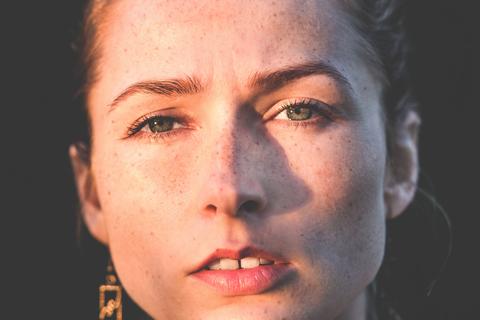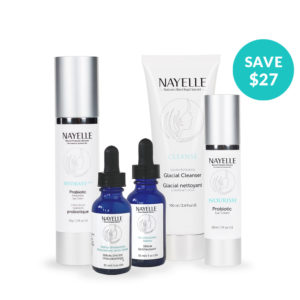
Whether your face flushes easily, is constantly red, or changes from day to day, facial redness can really make you crazy. People with rosacea become easily red from triggers like the sun or a glass of wine. A condition called perioral dermatitis causes redness around the mouth, chin, nose and even up near the eyes
Rosacea is not something you catch. Rosacea usually doesn’t appear before age 30 and can run in families. It’s most common in people who blush or flush easily. People tend not to recognize rosacea because it develops gradually. After a while, they begin to think they just flush easily, or that they’re having periodic acne attacks.
Rosacea starts as redness on the cheeks, nose, chin, or forehead (and less often on the neck, scalp, chest, or ears). At first, rosacea comes and goes. After a while, the redness deepens and lasts longer. Visible blood vessels appear in the skin. If not treated, pimples and bumps develop. The nose may become large and bumpy as tissue builds up. And rosacea sometimes affects the eyes, making them irritated, watery, and bloodshot.
There’s no cure for rosacea. But treatment especially when begun in the early stages can work wonders.
“Fortunately, there are some very good treatment options,” Winfield says. “The bottom-line message is this: There is real hope out there for people with rosacea.”
Primary Signs of Rosacea
- Flushing
Many people with rosacea have a history of frequent blushing or flushing. This facial redness may come and go, and is often the earliest sign of the disorder.
- Persistent Redness
Persistent facial redness is the most common individual sign of rosacea, and may resemble a blush or sunburn that does not go away. - Bumps and Pimples
Small red solid bumps or pus-filled pimples often develop. While these may resemble acne, blackheads are absent and burning or stinging may occur. - Visible Blood Vessels
In many people with rosacea, small blood vessels become visible on the skin. - Burning or Stinging
Burning or stinging sensations may often occur on the face. Itching or a feeling of tightness may also develop. - Dry Appearance
The central facial skin may be rough, and thus appear to be very dry. - Plaques
Raised red patches, known as plaques, may develop without changes in the surrounding skin. - Skin Thickening
The skin may thicken and enlarge from excess tissue, most commonly on the nose. This condition, known as rhinophyma, affects more men than women. - Swelling
Facial swelling, known as edema, may accompany other signs of rosacea or occur independently.
How is Rosacea Treated?
Because the signs and symptoms of rosacea vary from one patient to another, treatment must be tailored by a physician for each individual case.
Various oral and topical medications may be prescribed to treat the bumps and pimples often associated with the disorder, and a topical therapy to reduce facial redness is now available. Dermatologists often prescribe initial treatment with oral and topical therapy to bring the condition under immediate control, followed by long-term use of topical therapy to maintain remission. A version of an oral therapy with less risk of microbial resistance has also been developed specifically for rosacea and has been shown to be safe for long-term use.
Skin Care
Patients should check with their physicians to ensure their skin-care routine is compatible with their rosacea. A gentle skin-care routine can also help control rosacea. Patients are advised to clean their face with a mild and non-abrasive cleanser, then rinse with lukewarm water and blot the face dry with a thick cotton towel. Never pull, tug or use a rough washcloth.
Patients may apply non-irritating skin-care products as needed, and are advised to protect the skin from sun exposure using a sunscreen with an SPF of 15 or higher.
Cosmetics may be used to conceal the effects of rosacea. Green makeup or green-tinted foundations can be used to counter redness. This can be followed by a skin-tone foundation with natural yellow tones, avoiding those with pink or orange hues.
Avoid common triggers listed here.
- Sun exposure
Everyone should avoid too much sun, but people with rosacea are particularly sensitive. They should be sure to apply sun block to the face when going outdoors. But take care! Skin affected by rosacea is very sensitive to chemicals. Use a quality sun block that doesn’t irritate the skin.
- Stress
Flushing increases when you’re under stress. Learn relaxation techniques such as deep breathing.

- Alcohol
Alcohol doesn’t cause rosacea, but it does dilate blood vessels in the face. That makes rosacea worse.
- Spicy foods
Heavily spiced foods cause flushing and worsen rosacea.
- Cosmetics
Makeup, cleansers, lotions, and even some moisturizers can irritate the skin. Use only products that are non-irritating, hypoallergenic, and non-comedogenic. Best are organic products especially the top of the line organic cosmetics produced by NAYELLE. They have a very wide choice of cosmetics and skin care products that you can choose from that will definitely fit your needs.
Natural ways to treat facial redness
Whatever the cause of your facial redness, here are some simple home treatments that are both gentle and effective.
- Cucumber masks
Although there’s been no scientific research validating cucumber’s effect on facial redness, it has been documented as a natural home remedy for hundreds of years. Early records date back to 1649, when botanist and physician Nicholas Culpeper wrote of its benefits in clearing red from the face. Many people still swear by it. For best results, grate a cucumber or put it through a food processor to use as a face mask. For added cooling, use a cucumber straight from the fridge.
- Anti-redness diet
The most important aspect of an anti-redness diet is to reduce systemic inflammation. Step one is to follow the general guidelines of an anti-inflammatory diet.
Also work to clear internal heat from the body. Avoid food and drinks that add “fuel to the fire,” such as alcohol, spicy foods, and drinks that are hot in temperature.
Fish oil supplements and probiotics can be helpful. Cooling foods such as apple, celery, coconut, cucumber, melon, peach, papaya, and spinach should also be included.
- Colloidal oatmeal masks
A popular remedy for itching and redness in eczema, colloidal oatmeal is a natural remedy that can benefit any kind of facial redness. Sometimes the best cures can be the simplest ones! Colloidal oatmeal is nothing more than pulverized oats. It has a moisturizing effect on the skin, but also absorbs oil and can be beneficial for acne.
In a 2007 Journal of Drugs in Dermatology article, colloidal oatmeal was shown to have moisturizing, soothing, protective and anti-inflammatory properties. It has a low potential for irritation and very low chance of allergies.
To use, pour a couple of teaspoons of 100% pure colloidal oatmeal into your hand and mix with enough water to make a mask. Let it dry for 10 minutes, then rinse off. This inexpensive treatment can be used up to four times per week.
- Manuka honey
This special honey is produced primarily in New Zealand by bees that feed on the flowers of the manuka tree.
Rich in antioxidants, manuka is a powerful anti-inflammatory. It has antibacterial effects against the bacteria involved in acne. It additionally benefits rosacea and seborrheic dermatitis, eliminating redness while keeping the skin moisturized.
For topical use, purchase manuka that has a UMF/OMA rating of 15 or above. These rating numbers come from a system developed by scientists in New Zealand to describe the activity level of the honey. Apply directly to the skin as a daily cleanser.
- Anti-redness teas
Healing teas are recommended both to drink and to use topically. Three of my favorites are peppermint, chamomile and green tea.
The polyphenols in green tea have skin cell rejuvenating properties. Research abounds on the health benefits of drinking green tea. In addition, it’s a great topical wash, particularly for rosacea patients. Chamomile and peppermint teas can benefit any type of facial redness. Don’t use chamomile if you have a ragweed allergy, though; the two plants are closely related.
To make a topical tea compress, steep several bags in a pot of boiling water for 10 minutes. Cool the liquid in the refrigerator. Pour onto a washcloth and press onto the face for up to a minute, one to two times per day.

